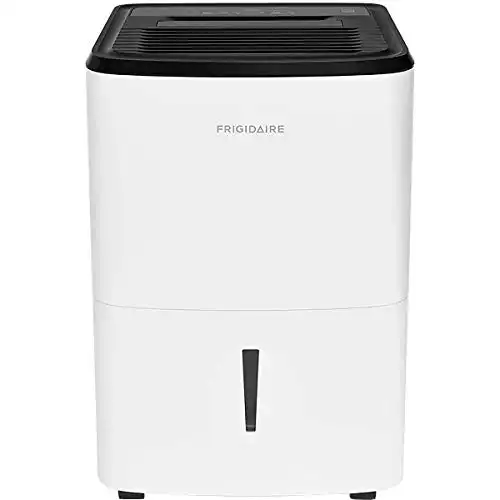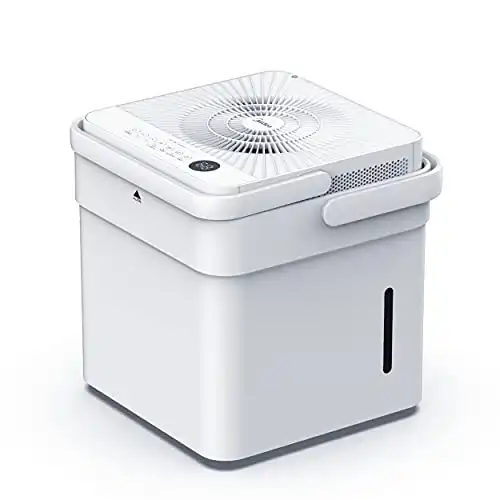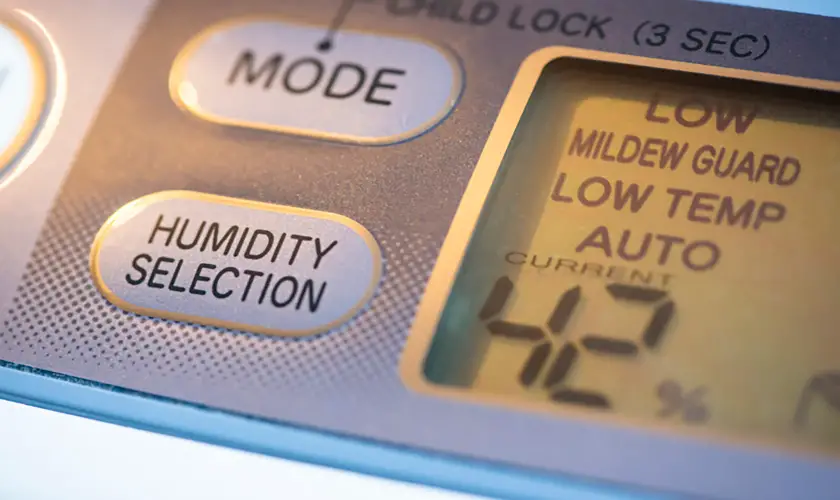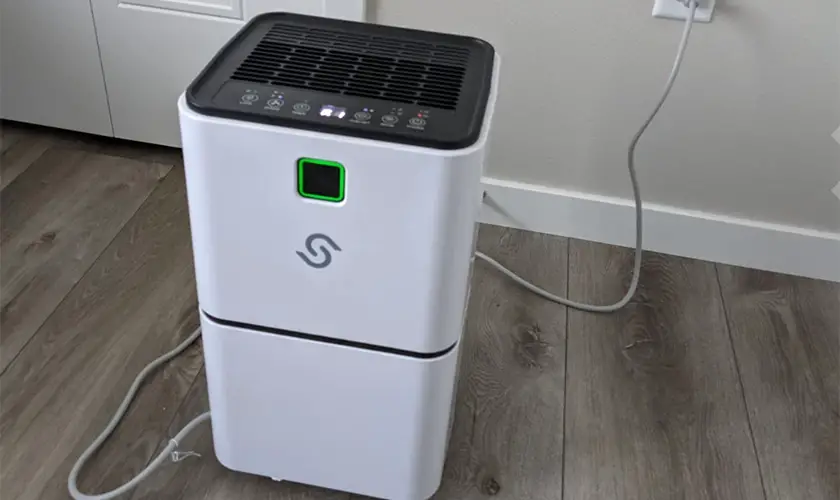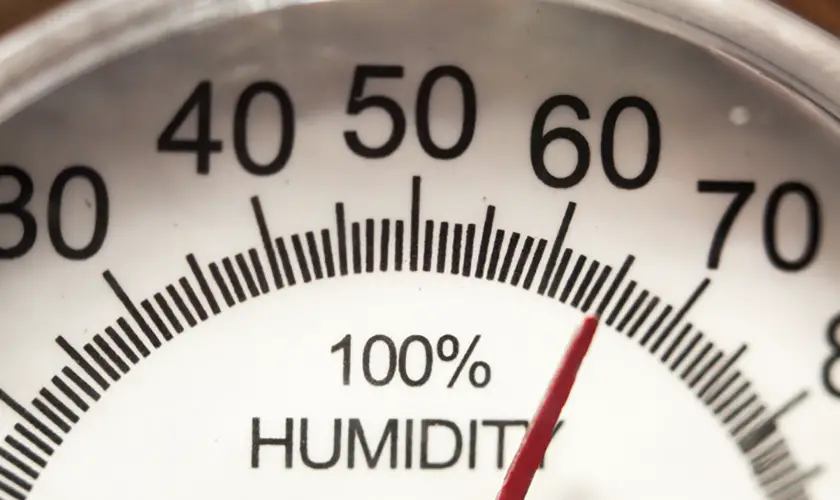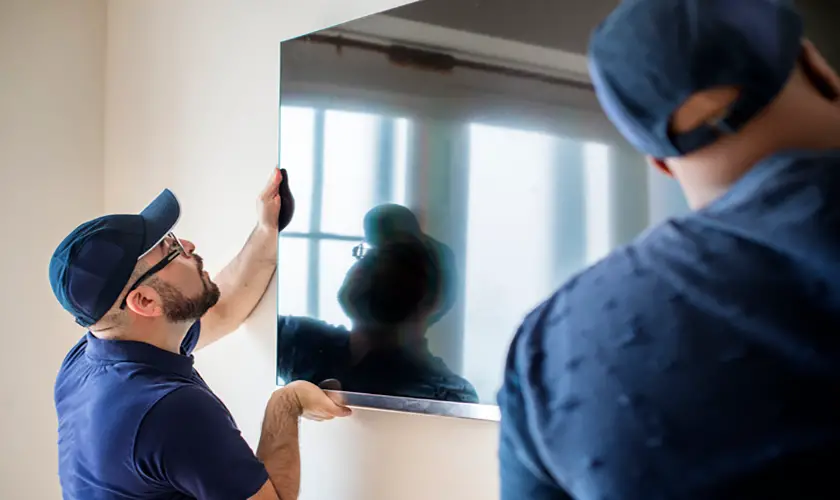
Since dehumidifiers absorb moisture and lower humidity in the air, does it mean that they can cause cracks in plaster, paint, flooring, or drywall?
The truth is that dehumidifiers can lead to cracks in materials such as paint and wet plaster. However, they won’t cause gaps in dry and cured brick walls, concrete floors, etc.
Even though people think that applying a dehumidifier to speed up paint and plaster curing time is effective, it’s not always the case since the plaster or paint can become brittle when dry.
Let’s explore in detail below whether a dehumidifier can cause drywall cracks or not.
Can a Dehumidifier Cause Damage?
A dehumidifier can cause damage to your home if it is used for purposes other than desiccating. If you use it to dry clothes, for example, you could cause damage to your walls and flooring.
If you let the water tank get too full, you could cause damage to the unit itself. If a problem with the dehumidifier is left unresolved, it may spread to other parts of the home.
Every situation is different, so it’s best to know what you’re getting into before using a dehumidifier for other purposes. Whether a dehumidifier causes damage or not depends on several factors, including the type of surface.
Can a Dehumidifier Cause Cracks in Plaster?
A dehumidifier is unlikely to cause cracks in walls and flooring. As long as the concrete and plaster are arid, your dehumidifier won’t have any effects.
As we’ll highlight below, it would help allow materials such as paint and plaster to cure before using a dehumidifier completely. Standard home dehumidifiers won’t lower relative humidity enough to destroy fixed concrete or plaster.
However, even without a dehumidifier, cracks can still happen in your home. You should, therefore, not associate every split with the device’s presence.
Can You Employ a Dehumidifier to Dry Plaster?
Most experts recommend avoiding using a dehumidifier to speed up your plaster’s curing process. The longer you allow the application to cure on its own, the harder it becomes. If you fix your plaster quickly, it’ll become brittle.
If you allow the plaster to cure naturally, it is likely to stick better on the wall, thus reducing the risk of cracks.
Employing a dehumidifier to speed up the process results in brittle plaster. It’s prone to flaking and cracking, something no one wants to experience.
Can You Employ a Dehumidifier in a Newly Painted Room?
We recommend that you avoid using a dehumidifier to dry plaster and paint. Paint is reputable for taking a lot of time to cure. You must adhere to the manufacturer’s drying time and instructions to achieve effective results.
The longer you allow the paint to dry, the better it’ll bond to the wall and show effective performance. Employing a dehumidifier to speed up the wall’s drying process could lead to defects and a brittle finish in the final color.
However, dehumidifiers won’t work for solvent-based paints since they don’t absorb solvents. To speed up your paint’s drying process, you must turn the central heating system to a few degrees. There is also an option of pointing a fan at the surface in question.
Even though applying a dehumidifier in a newly painted room might speed up the drying of paint, we recommend that you allow it to dry naturally and for a longer time for effective results.
Can You Dry Wood Indoors with a Dehumidifier?
Yes, it’s possible to dry your firewood indoors using a dehumidifier. The process for drying your wood indoors is similar to that of drying clothes.
A dehumidifier reduces the relative humidity of the air around your wood. The dry air pulls moisture from your wood.
The dehumidifier and wood should be placed in an enclosed space for the drying process to work effectively. You must pile up your wood in a room and leave the dehumidifier in the operation.
However, you must understand that using a dehumidifier to dry wood can be costly.
Does Low Humidity Cause Drywall Cracking?
It’s common knowledge that high moisture levels in the environment cause drywall cracking. Most people don’t know that low relative humidity, especially if it happens over a short time, can also cause your drywall to crack.
Therefore, you should be careful while employing any temporary heat in your home, especially if you have installed a central heating system.
If such heating sources become extremely warm, they’ll contribute to a reduction in humidity levels. The result will be a cracking of the drywall.
A low humidity level is typical during winter. If you have low humidity and dry air in your house, it can also cause health-related challenges. The challenges include problems with your eyes, skin, and sinuses.
Mistakes People Make with Dehumidifiers
High humidity in your living space can have unexpected health implications. Many people understand and have taken the time to invest in reliable dehumidifiers to solve the problem. However, some challenges present themselves when a dehumidifier is in use.
Below are common mistakes that you might make while using a dehumidifier:
1. Applying the Wrong Capacity Dehumidifier
Dehumidifiers are available in different sizes, defined by their ability to remove moisture and water from the air. A dehumidifier’s capacity is measured by pints of moisture that the device can absorb from the environment within 24 hours.
Most manufacturers implement the rating from places having low moisture levels. It, therefore, means that even though a dehumidifier can claim to remove 20 pints of moisture, it can only be possible in places with low humidity levels.
Employing such a dehumidifier in damp rooms might not be effective. It’s, therefore, a common mistake that most people make.
In that case, it is wise to invest in a large dehumidifier. Even though such a device could be expensive, it’ll effectively remove all the unwanted moisture and water from the air.
A low-capacity dehumidifier will be overloaded, consume a lot of energy, yet offer below-standard performance. Using a low-capacity environment will also overwork the device, thus reducing its lifespan.
2. Employing Cheap Dehumidifier Models
It is entirely natural to look for the best budget option possible when it comes to dehumidifiers! Most available, affordable options do not have safety measures such as auto shut-off and humidistat.
A cheap dehumidifier must operate for a long time to absorb the same amount of moisture as an expensive model.
However, not all cheap dehumidifiers are low-quality products. Ensure that you’re using a product that functions well.
3. Attempting to Move Partly Immobile & Heavy Units
Moving a dehumidifier becomes more hazardous if the dehumidifier doesn’t have accessories such as a carrying handle or caster for easy movement. Apart from hurting yourself, you might end up damaging the apartment floor.
It would help if you always left heavy, sturdy dehumidifiers alone. If you intend to move them around the house, ensure you invest in a product with casters.
4. Keeping the Dehumidifier Dirty
The air you breathe will most likely pass through the device. If you do not clean the dehumidifier, potential mold and mildew build-up will get into your system, making it hazardous to your health and those residing in the home.
5. Employing Noisy Dehumidifiers
Some dehumidifiers emit a lot of noise during operation. It’s more familiar with smaller capacity devices that dehumidify large spaces.
Overworking a small dehumidifier will force it to produce a lot of noise as it turns the fans and compressors. Too much noise can distract you, especially if you are sleeping or want to engage in essential activities such as reading.
You should invest in a high-capacity dehumidifier to prevent such a mistake since it operates to the required setting without experiencing strain.
6. Using Dehumidifier Without Safety Features
If you buy a dehumidifier that doesn’t have a humidistat, it won’t shut down even when the air in your room is dry to your required capacity. Apart from posing an environmental hazard, it’ll also force you to spend more on electricity bills.
If your dehumidifier doesn’t come with an in-built humidistat, buying an independent hygrometer is an option. The device will enable you to measure the humidity of your room and stabilize it to your required level.
7. Leaving Water in the Pints Buckets for Long
You need to check your pint bucket’s capacity. Some dehumidifiers come with low-capacity buckets that you must empty regularly.
However, if keeping an eye on the bucket is difficult for you, we recommend purchasing a dehumidifier with an inbuilt drainage system. In such a situation, you don’t need to empty the buckets.
If you allow the buckets to be sufficient without emptying, the dehumidifier’s efficiency will reduce. The increased humidity in your space will translate into allergies. You should always check the humidity level as soon as you notice condensation.
8. Paying Less Attention to the Room’s Humidity Level
Experts recommend that the humidity level in your room should not be lower than 35-40% during winter and around 50% during summer.
Employing a dehumidifier that absorbs moisture to an extent below these levels is dangerous. It also presents environmental degradation.
For most homeowners, a high humidity level has always been a challenge. The situation is even worse when a wet season kicks in. You can use a dehumidifier to correct the problem.
As we have seen above, a dehumidifier is designed to eliminate excess moisture in the environment, thus creating a stable and healthy balance that is dry enough not to allow the survival of dump-based allergens.
Mistakes to Avoid While Purchasing a Dehumidifier
Since there are many sizes and brands of dehumidifiers on the market, selecting the best device for your needs becomes challenging. Most mistakes that people experience result from purchasing the wrong model.
Here, we focus on some mistakes to avoid while purchasing a dehumidifier.
1. Purchasing a Dehumidifier Without an Automatic Restart
The best dehumidifier is one with an auto-restart feature. If there is a power outage, your dehumidifier will restart as soon as the power turns on. Without an auto-restart, your dehumidifier won’t function until you turn it on manually.
Such a device isn’t perfect for you, especially if you’re away from home most of the time.
2. Purchasing Low Capacity Dehumidifiers
Even though a low-capacity dehumidifier might appear favorable and within your budget, it won’t be effective, especially if you find yourself in a large house.
We recommend going for a high-capacity device with different operation settings. It becomes possible to adjust the settings to your preferred humidity regulation.
It would help to consider your preferred dehumidifier’s portability and ease of mobility.
3. Purchasing a Device Without Energy Star Rating
The energy star rating shows that the dehumidifier can operate to save energy consumption. Energy star appliances are also safe for the environment.
4. Buying a Dehumidifier that isn’t Auto Shut-off
The ideal dehumidifier is one designed with an auto-shutoff feature. It has a system that can monitor your room’s humidity and shut off automatically when the desired humidity level comes about. The device will therefore operate at its best capacity.
How to Ensure Your Dehumidifier Functions Effectively
Below are steps you can take to ensure that your dehumidifier operates without challenges:
- Ensure that airflow isn’t restricted: Some dehumidifiers are designed with vents above them to allow them to sit against a wall. Others come with vents on the sides, meaning you shouldn’t push them against the furniture or walls.
- Clean the air filters regularly: Your dehumidifier won’t function well if it’s dirty. Ensure you clean your device at least once per week.
- Unplug the dehumidifier every time you’re cleaning it or emptying the container.
The Most Effective Dehumidifier to Buy
If you decide to purchase a dehumidifier, it will only make sense if you go for one that offers effective performance. Such a dehumidifier is unlikely to cause drywall cracks. Below are some effective dehumidifiers to consider:
If you’re looking for a reliable dehumidifier, look no further than the frigidaire FFAP5033W1 model.
It’s among the few dehumidifiers designed with an active pump. You can send water out a window or to a high sink.
The dehumidifier also stands out from the rest thanks to its design. It’s sleek and designed with an attractive digital display that makes it easier for you to see settings and indicator lights. Its filter is also easier to remove and clean.
Apart from coming on casters for easy rolling, it also comes with a heavy-duty top handle for moving down the stairs.
The FFAP5033W1 model comes with a capacity of 50 pints. You can run the device for long periods before emptying it. The dehumidifier is also energy star certified.
You’ll also like that this model has a humidity and frost sensor. Its auto-restart feature makes it easier to operate the device, especially when the power goes off. If you purchase this divide, you’ll get a 1-year warranty.
The GE APER50LZ presents a large capacity dehumidifier option. This dehumidifier’s best features include a humidity sensor, frost sensor, and auto-restart specialty. Since the unit is energy star certified, it is energy-efficient.
The dehumidifier has a pump, even though you can still drain the tank passively by carrying the bucket to a sink or using a hose. It has all the features you would want in a dehumidifier, including a changing timer and indicator lights.
However, it might not be easy to store and wrap the power cord for this product. Grabbing the handles might also prove to be complicated.
If you like using a product with a compact design, then the Midea 20-Pint Cube Dehumidifier model has got you covered.
The product is designed with a capacity of 20 pints, a humidity sensor, and an auto-restart feature. You also stand a chance of getting a 1-year warranty.
There is an option of connecting the dehumidifier to an application and monitoring everything from your phone. You can adjust the fan’s speed and change the settings remotely. Voice control is also available through Google Assistant and Alexa.
Conclusion
As we have seen, a dehumidifier won’t cause cracks on walls and floors. However, it can cause paint and wet plaster to crack and become brittle. You should, therefore, not worry about a dehumidifier breaking your drywalls.
If you want effective performance from your dehumidifier, you need to avoid the mistakes we have highlighted while using and buying the device. It would also help to clean your machine regularly.
If you’re seeking to purchase a practical device, you can select from any dehumidifiers we have recommended above. We hope you keep your drywalls in good shape.


